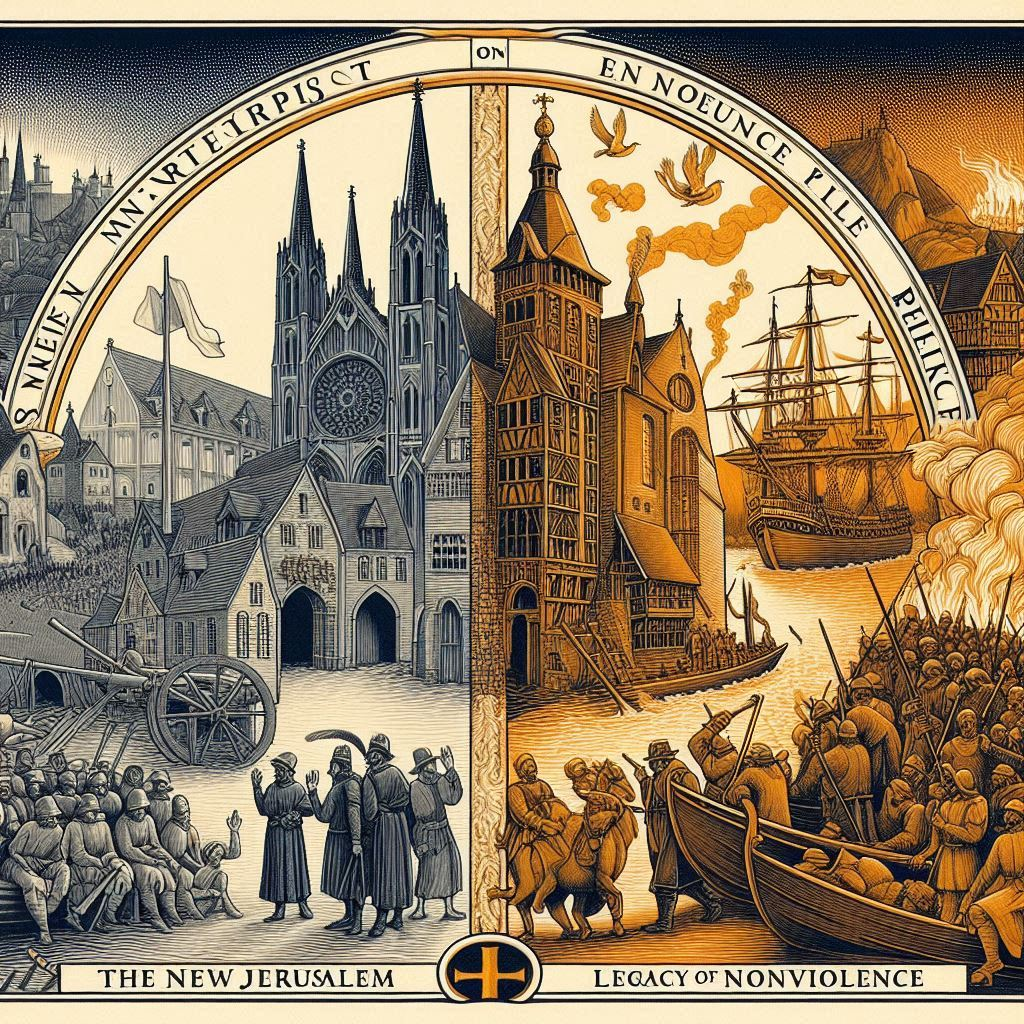Wrestling with a Violent Chapter in Anabaptist History
*A Journey Midweek Essay

In the quiet of the night, when shadows stretch and my mind wanders to the corners of history, I find the specter of Münster lurking—a tale of faith turned fortress, of Anabaptists who once sought to carve out a New Jerusalem from the very stone and strife of the world. Münster is a creature birthed from our Anabaptist past that we must wrestle with lest I fear that in some churches, the same beliefs that led to catastrophe will overinfluence the Anabaptism faith of today. To that end, let us reflect on the dichotomy of peace and violence, of shalom and sword.
In 1534, the Anabaptist movement, rooted in the peaceful teachings of Christ, faced a crucible in the city of Münster. Here, a radical faction led by Jan Matthys and later Jan van Leiden, seized control. They declared Münster the New Jerusalem, a sanctuary for the faithful in the tumult of the Reformation. Yet, in their zeal, they fortified the city, not just with walls but with the very weapons they once eschewed.
The Münster under our beds is not just a historical account; it is a cautionary presence, a reminder of the thin line between defense and aggression. The Anabaptists in Münster, in their fervor to defend their faith, resorted to the sword, casting a long shadow on the Anabaptist commitment to nonviolence. Their actions became a stain upon the reputation of a movement dedicated to living out the peace of Christ, the way of shalom that refuses to answer violence with violence.
Today, elements within the Anabaptist church still grapple with the legacy of Münster. The question lingers like a fearful creature lurking while we sleep: Can faith be defended by force without betraying its essence? The Anabaptists in Münster believed so, but at what cost? The siege of Münster ended in bloodshed and defeat, the leaders executed, their bodies displayed in iron cages as a grim testament to their folly.
Yet, rather than fear the Münster under our beds, it is important that we face its legacy with a sober countenance and a contemplative heart. Münster serves as a mirror, asking us to examine our own beliefs and the lengths we would go to defend them. Münster urges us to consider the power of nonviolent resistance, the strength of a community that holds fast to the teachings of Christ, even when the world demands a fight.
The Münster under our beds whispers a warning: that the path of peace is narrow and often treacherous, but it is the way of Christ. It is a path that does not deny the reality of evil but confronts it with a different kind of power—the power of love, of sacrifice, of turning the other cheek. It is the way that transforms enemies into neighbors and swords into plowshares.
As we ponder the legacy of Münster, let us choose to emerge from under the covers, not with weapons drawn but with hands extended in peace. For the way of shalom is not a relic of the past; it is a living, breathing call to action—a call to live out the peaceable kingdom here and now, in a world that still very much needs it.
*During my participation in the AMBS Journey program which I began February 2023, I will be sharing some of my learnings and reflections as well as creative works inspired by the “journey.”